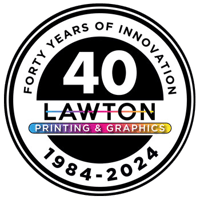Lawton Printing and Graphics, a premier provider of printing and graphic solutions in North Texas,...
How to Print Professional Booklets Using a Digital Press
Unlock the potential of digital press technology to create stunning, professional-quality booklets that leave a lasting impression.
Understanding the Benefits of Digital Press for Booklet Printing
Digital press technology offers numerous benefits for booklet printing, making it an ideal choice for both small and large print runs. One of the primary advantages is the high-quality output, which rivals traditional offset printing in terms of color accuracy and detail. This ensures that your booklets will look professional and visually appealing.
Moreover, digital presses allow for quick turnaround times and greater flexibility. You can easily make last-minute changes to your booklet's design without incurring significant additional costs. This flexibility is particularly beneficial for businesses that need to produce marketing materials or event programs on short notice.
Essential Steps to Prepare Your Booklet for Digital Printing
Preparing your booklet for digital printing involves several crucial steps to ensure the final product meets your expectations. Start by designing your booklet using professional software such as Adobe InDesign or Illustrator. Ensure that your layout is clean, and all images and text are properly aligned and formatted.
Next, proofread your content thoroughly to eliminate any typos or errors. It's also essential to convert your design files to a print-ready format, typically PDF, to preserve the layout and quality. Finally, check with your printing service provider for any specific requirements or guidelines they may have for digital printing.
Choosing the Right Paper and Finishes for a Professional Look
The choice of paper and finishes can significantly impact the overall look and feel of your booklet. For a professional appearance, opt for high-quality paper stocks that offer durability and a premium feel. Glossy or matte finishes can add a touch of elegance, depending on the aesthetic you aim to achieve.
Consider using heavier paper for the cover and lighter paper for the inner pages to provide a balanced and sturdy booklet. Additionally, you can explore various binding options, such as saddle stitching or perfect binding, to enhance the professional look of your booklet.
Optimizing Color and Image Quality for Digital Printing
Color and image quality are critical components of any printed material. To ensure your booklet looks vibrant and sharp, use high-resolution images and graphics. Aim for a minimum resolution of 300 DPI (dots per inch) to avoid pixelation and blurriness.
When it comes to color, work in CMYK (Cyan, Magenta, Yellow, Black) color mode, as this is the standard for digital printing. This will help you achieve accurate color reproduction in the final printed product. Additionally, consider color calibration tools to ensure consistency across different devices and printers.
Cost-Effective Strategies for High-Volume Booklet Production
Producing booklets in high volumes can be costly, but there are strategies to keep expenses manageable. One approach is to order in bulk, as many printing services offer discounts for larger orders. This can significantly reduce the cost per unit.
Another strategy is to streamline your design to minimize the use of costly materials and finishes. For instance, opting for a simpler binding method or using standard paper sizes can help cut costs. Additionally, digital printing allows for print-on-demand, meaning you can print only the quantity you need, reducing waste and storage costs.


